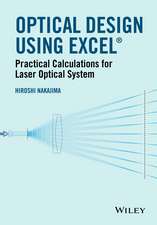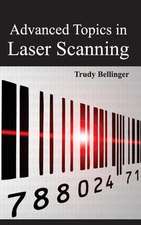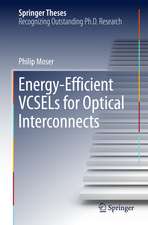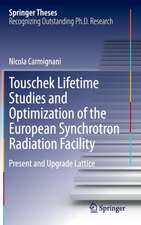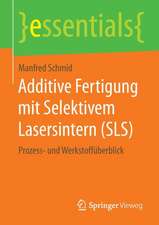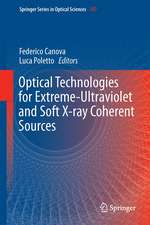Ultra-high Frequency Linear Fiber Optic Systems: Springer Series in Optical Sciences, cartea 159
Autor Kam Y. Lauen Limba Engleză Paperback – 15 iul 2013
transmitters and the use of Erbium-doped fiber amplifier (EDFA) in linear fiber optic systems. Significant examples of field deployed military systems enabled by linear fiber optic links are described in an appendix.
| Toate formatele și edițiile | Preț | Express |
|---|---|---|
| Paperback (1) | 640.06 lei 43-57 zile | |
| Springer Berlin, Heidelberg – 15 iul 2013 | 640.06 lei 43-57 zile | |
| Hardback (1) | 644.18 lei 43-57 zile | |
| Springer Berlin, Heidelberg – 12 mai 2011 | 644.18 lei 43-57 zile |
Din seria Springer Series in Optical Sciences
- 24%
 Preț: 945.45 lei
Preț: 945.45 lei - 18%
 Preț: 1850.21 lei
Preț: 1850.21 lei - 18%
 Preț: 2124.06 lei
Preț: 2124.06 lei - 20%
 Preț: 568.46 lei
Preț: 568.46 lei - 18%
 Preț: 1118.93 lei
Preț: 1118.93 lei - 18%
 Preț: 999.76 lei
Preț: 999.76 lei - 18%
 Preț: 957.62 lei
Preț: 957.62 lei - 18%
 Preț: 892.11 lei
Preț: 892.11 lei - 15%
 Preț: 648.56 lei
Preț: 648.56 lei - 18%
 Preț: 1838.07 lei
Preț: 1838.07 lei -
 Preț: 379.86 lei
Preț: 379.86 lei - 18%
 Preț: 1392.95 lei
Preț: 1392.95 lei - 18%
 Preț: 1232.89 lei
Preț: 1232.89 lei - 18%
 Preț: 1568.95 lei
Preț: 1568.95 lei - 18%
 Preț: 2095.49 lei
Preț: 2095.49 lei - 18%
 Preț: 1227.84 lei
Preț: 1227.84 lei - 15%
 Preț: 643.65 lei
Preț: 643.65 lei - 18%
 Preț: 954.45 lei
Preț: 954.45 lei - 18%
 Preț: 947.35 lei
Preț: 947.35 lei - 18%
 Preț: 1241.55 lei
Preț: 1241.55 lei - 18%
 Preț: 947.04 lei
Preț: 947.04 lei -
 Preț: 392.21 lei
Preț: 392.21 lei - 18%
 Preț: 997.53 lei
Preț: 997.53 lei - 18%
 Preț: 1562.31 lei
Preț: 1562.31 lei - 18%
 Preț: 1110.24 lei
Preț: 1110.24 lei - 15%
 Preț: 651.19 lei
Preț: 651.19 lei -
 Preț: 414.69 lei
Preț: 414.69 lei - 18%
 Preț: 952.57 lei
Preț: 952.57 lei - 15%
 Preț: 641.03 lei
Preț: 641.03 lei - 15%
 Preț: 635.80 lei
Preț: 635.80 lei
Preț: 640.06 lei
Preț vechi: 753.01 lei
-15% Nou
Puncte Express: 960
Preț estimativ în valută:
122.48€ • 128.20$ • 101.94£
122.48€ • 128.20$ • 101.94£
Carte tipărită la comandă
Livrare economică 31 martie-14 aprilie
Preluare comenzi: 021 569.72.76
Specificații
ISBN-13: 9783642268212
ISBN-10: 3642268218
Pagini: 280
Ilustrații: XXIV, 256 p.
Dimensiuni: 155 x 235 x 22 mm
Greutate: 0.41 kg
Ediția:Softcover reprint of hardcover 2nd ed. 2011
Editura: Springer Berlin, Heidelberg
Colecția Springer
Seria Springer Series in Optical Sciences
Locul publicării:Berlin, Heidelberg, Germany
ISBN-10: 3642268218
Pagini: 280
Ilustrații: XXIV, 256 p.
Dimensiuni: 155 x 235 x 22 mm
Greutate: 0.41 kg
Ediția:Softcover reprint of hardcover 2nd ed. 2011
Editura: Springer Berlin, Heidelberg
Colecția Springer
Seria Springer Series in Optical Sciences
Locul publicării:Berlin, Heidelberg, Germany
Public țintă
ResearchCuprins
Part I Physics of High Speed Lasers.- Basic Description of Laser Diode Dynamics by Spatially Averaged Rate Equations.- Conditions of Validity.- Basic “Small Signal” Modulation Response.- Distortions in Direct Modulation of Laser Diodes.- Direct Modulation beyond X-band by Operation at High Optical Power Density.- Improvement in Direct Modulation Speed by Enhanced Differential Optical Gain and Quantum Confinement.- Dynamic Longitudinal Mode Spectral Behavior of Laser Diodes under Direct High Frequency Modulation.- Signal-Induced Noise in Fiber Links.- Part II Direct Modulation of Semiconductor Lasers beyond Relaxation Oscillation.- Illustration of Resonant Modulation.- Resonant Modulation of Monolithic Laser Diodes at mm-Wave Frequencies.- Performance of Resonant Modulation in the mm-Wave Frequency
Range – Multi-subcarrier Modulation.- Resonant Modulation of Single-Contact Lasers.- Part III Fiber Transmission Effects, System Perspectives and Innovative Approach to Broadband mm-wave Subcarrier Optical Signals.- Fiber Chromatic Dispersion Effects of Broadband mm-Wave Subcarrier Optical Signals and Its Elimination.- Transmission Demonstrations.- Application of Linear Fiber Links to Wireless Signal Distribution – A High-level System Perspective.- Improvements in Baseband Fiber Optic Transmission by Superposition of High Frequency Microwave Modulation.- 16 mm-wave Signal Transport over Optical Fiber Links by “Feed-forward Modulation”.- Frequency Planning for Minimal Intermodulation Distortion.- Erbium Fiber Amplifiers in Linear Lightwave Transmission.
Range – Multi-subcarrier Modulation.- Resonant Modulation of Single-Contact Lasers.- Part III Fiber Transmission Effects, System Perspectives and Innovative Approach to Broadband mm-wave Subcarrier Optical Signals.- Fiber Chromatic Dispersion Effects of Broadband mm-Wave Subcarrier Optical Signals and Its Elimination.- Transmission Demonstrations.- Application of Linear Fiber Links to Wireless Signal Distribution – A High-level System Perspective.- Improvements in Baseband Fiber Optic Transmission by Superposition of High Frequency Microwave Modulation.- 16 mm-wave Signal Transport over Optical Fiber Links by “Feed-forward Modulation”.- Frequency Planning for Minimal Intermodulation Distortion.- Erbium Fiber Amplifiers in Linear Lightwave Transmission.
Notă biografică
Kam Y. Lau is Professor emeritus in the EECS department at U.C. Berkeley. He received his B.S., M.S.and Ph.D degrees in 1978, 1978 and 1981 respectively; all in Electrical Engineering from Caltech. Upon obtaining his doctorate, he joined Ortel Corporation as founding staff/chief scientist. His research in semiconductor laser dynamics established fundamental limits in speed and linearity of directly modulated laser diodes, which contributed to linear fiber-optic transmission products for Hybrid-Fiber-Coax (HFC) infrastructure widely deployed today for CATV-distribution and cable-modem internet-access - the basis of Ortel’s successes - its IPO and subsequent acquisition by Lucent/Agere.
He received the 1996 IEEE LEOS William Streifer Scientific Achievement Award, the 1996 IEEE LEOS Distinguished Lecturer Award, the 2008 OSA Nicholas Holonyak Award, the 2009 IEEE David Sarnoff Award and the 2009 IET J.J. Thomson Medal. He was an Associate Professor of Electrical Engineering at Columbia University from 1988-90, and a professor of EECS at U.C. Berkeley since 1990. In 1997, he co-found LGC Wireless, Inc. (“L” of “LGC”.) LGC Wireless delivers cost-effective in-building wireless coverage and capacity solutions around the world. LGC Wireless was acquired by ADC Telecom (NASDAQ: ADCT) in 2007.
Prof. Lau assumed Emeritus status in 2005.
He received the 1996 IEEE LEOS William Streifer Scientific Achievement Award, the 1996 IEEE LEOS Distinguished Lecturer Award, the 2008 OSA Nicholas Holonyak Award, the 2009 IEEE David Sarnoff Award and the 2009 IET J.J. Thomson Medal. He was an Associate Professor of Electrical Engineering at Columbia University from 1988-90, and a professor of EECS at U.C. Berkeley since 1990. In 1997, he co-found LGC Wireless, Inc. (“L” of “LGC”.) LGC Wireless delivers cost-effective in-building wireless coverage and capacity solutions around the world. LGC Wireless was acquired by ADC Telecom (NASDAQ: ADCT) in 2007.
Prof. Lau assumed Emeritus status in 2005.
Textul de pe ultima copertă
This book provides an in-depth treatment of both linear fiber-optic systems and their key enabling devices. It presents a concise but rigorous treatment of the theory and practice of analog (linear) fiber-optics links and systems that constitute the foundation of Hybrid Fiber Coax infrastructure in present-day CATV distribution and cable modem Internet access. Emerging applications in remote fiber-optic feed for free-space millimeter wave enterprise campus networks are also described. Issues such as dispersion and interferometric noise are treated quantitatively, and means for mitigating them are explained. This broad but concise text will thus be invaluable not only to students of fiber-optics communication but also to practicing engineers. To the second edition of this book important new aspects of linear fiber-optic transmission technologies are added, such as high level system architectural issues, algorithms for deriving the optimal frequency assignment, directly modulated or externally modulated laser transmitters and the use of Erbium-doped fiber amplifier (EDFA) in linear fiber optic systems. Significant examples of field deployed military systems enabled by linear fiber optic links are described in an appendix.
Caracteristici
In-depth treatment of both linear fiber-optic systems and their key enabling devices Second edition incorporates latest aspects of linear fiber-optic transmission technologies e.g. high- level system architecture, algorithms for deriving the optimal frequency assignment, and directly- modulated or externally modulated laser transmitters Includes supplementary material: sn.pub/extras

